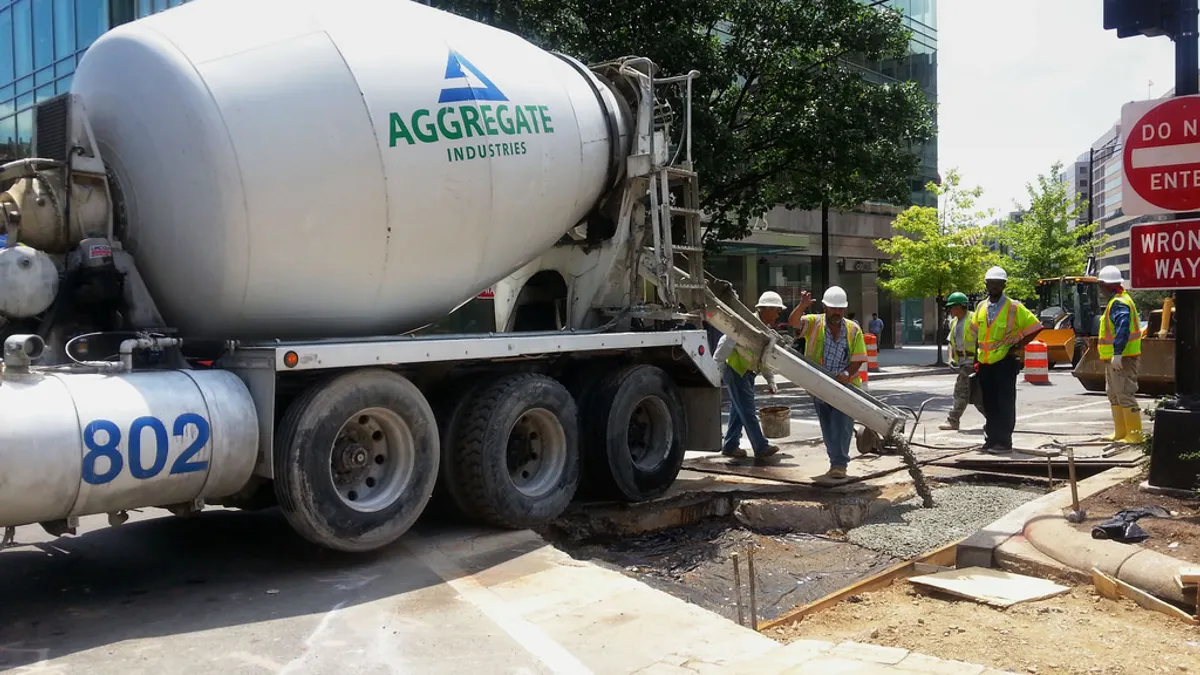Dive Brief:
- The mammoth cement industry, according to AZO Materials, has its work cut out for it if cement is to become more sustainable, including reducing carbon dioxide emissions in the manufacturing process and overcoming the destructive effects of climate change.
- AZO said the global production of cement is currently at 2.8 billion tons per year and is expected to increase significantly in coming years. The manufacturing of cement, according to the CICERO Center for International Climate Research, is the third largest source of carbon dioxide emissions behind fossil fuels and land-use change and has increased 30-fold since the 1950s and 40-fold since 1990, spurred by development in China. To counteract this, the cement industry has started to use alternative raw materials such as fly ash and finding ways for concrete to absorb carbon dioxide. According to U.S. Concrete, one ton of cement production releases one ton of carbon dioxide into the atmosphere.
- More than a decade ago, manufacturers representing 30% of cement production formed the World Business Council for Sustainable Development to address issues that include sustainability, employee safety and climate change. According to AZO, climate change can destabilize structures that use cement and concrete by increased flooding that can cause wear and tear. Additionally, some builders are trying to mitigate the effect of other climate concerns on concrete, like the heat island effect, by placing solar panels atop concrete and by installing green roofs.
Dive Insight:
Some concrete manufacturers are tinkering with their mixes to reduce their need for cement, which is a main component of concrete. U.S. Concrete, for example, has low-CO2 mixes, one of which uses fly ash to replace up to 50% of the required cement.
Cement is often called "the glue" that holds concrete together. However, according to the Portland Cement Association, concrete can absorb CO2, making cement and concrete a "carbon sink" that could eventually negate the effects of pumping so much of the gas into the air during the production phase.
Technology is also trying to help boost concrete's sustainability factor. One Canadian company, CarbonCure, has discovered a way to reduce CO2 emissions through the production of concrete itself. CarbonCure's solution is to capture CO2 and then inject it into the concrete during the mix process. The CO2 is sequestered forever because it reacts with concrete to become a mineral. So even if the concrete is demolished in the future, it's not released back into the environment.












